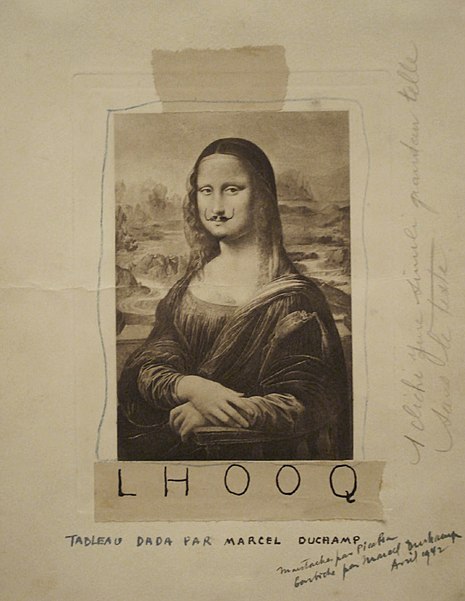As for Duchamp, his early interest in Roussel was probably revived by the stunningdisclosure that most of his narratives, and among them the cult novel Impressionsd’Afrique (1910), had been generated from puns reminiscent of LHOOQ.
L.H.O.O.Q. is a Marcel Duchamp readymade artwork conceived in 1919. The work consists of a cheap postcard reproduction of Da Vinci's Mona Lisa (the found object or objet trouvé), "improved" by Duchamp with the addition of a penciled in moustache and a goatee with the title drawn in large capital letters underneath.

L.H.O.O.Q. is a pun whose letters pronounced one at a time in French sound like "Elle a chaud au cul". This translates variously as "She is hot in the arse" or "She has a hot ass". "Avoir chaud au cul" is a vulgar expression implying that a woman has sexual restlessness. Duchamp, in an interview, gave a loose translation of L.H.O.O.Q. as "there is fire down below". (Schwarz 203)
link: https://hyp.is/GPVO4sA6EeyYiZdqyfGJSA/en.wikipedia.org/wiki/L.H.O.O.Q.